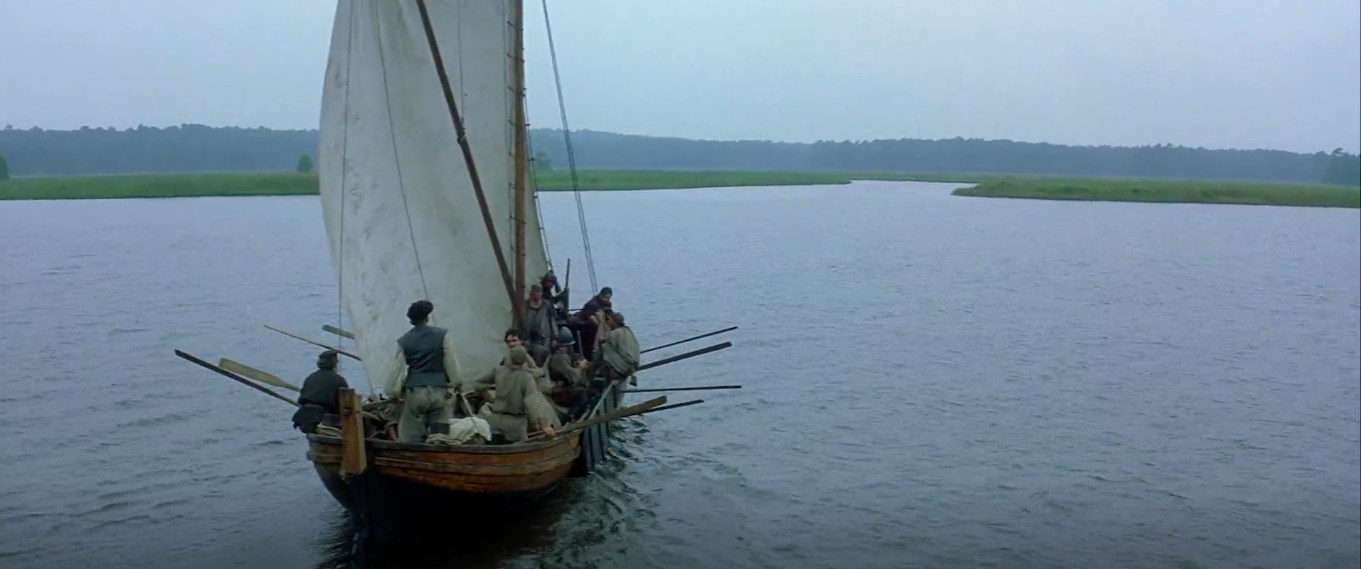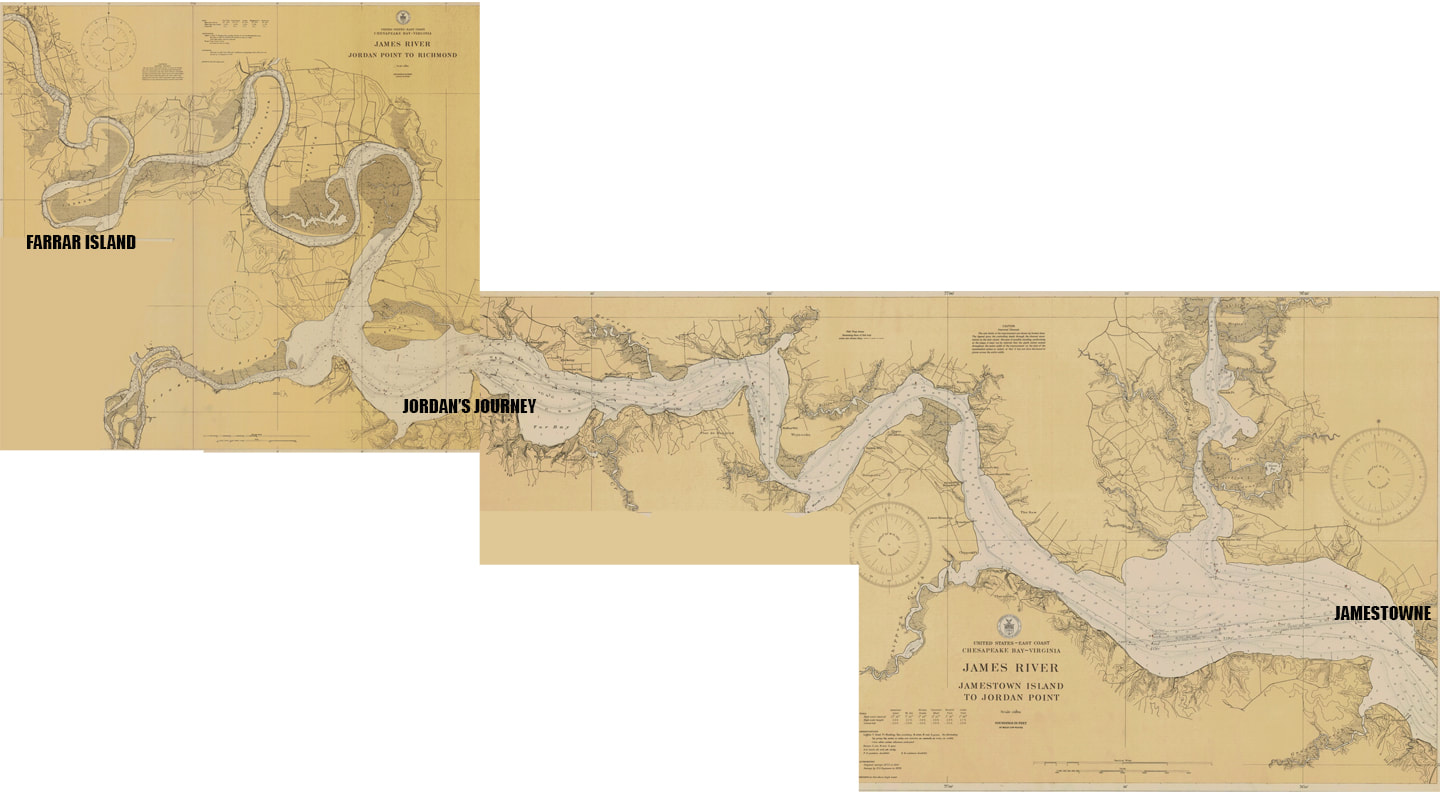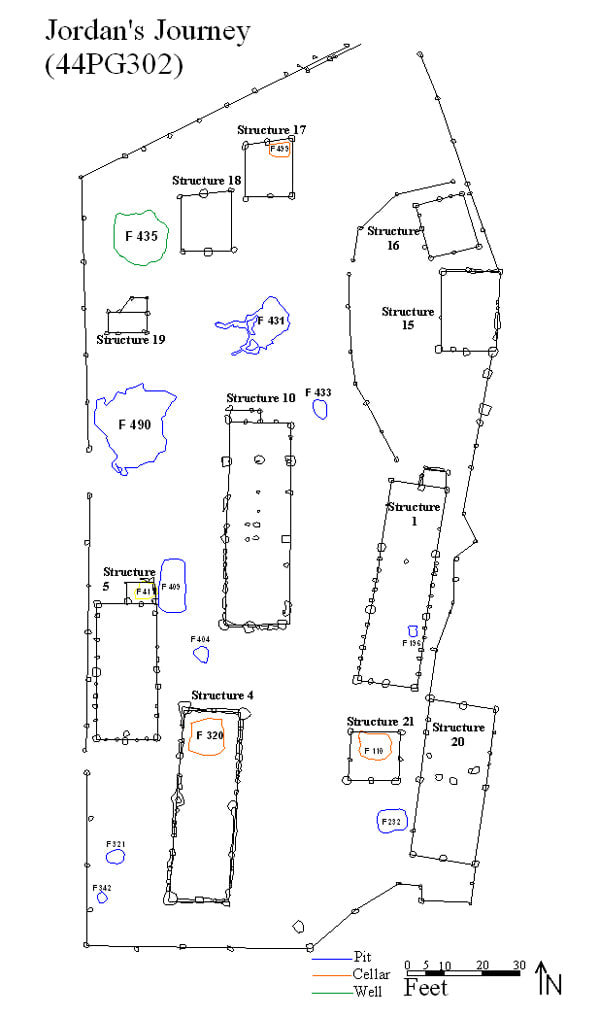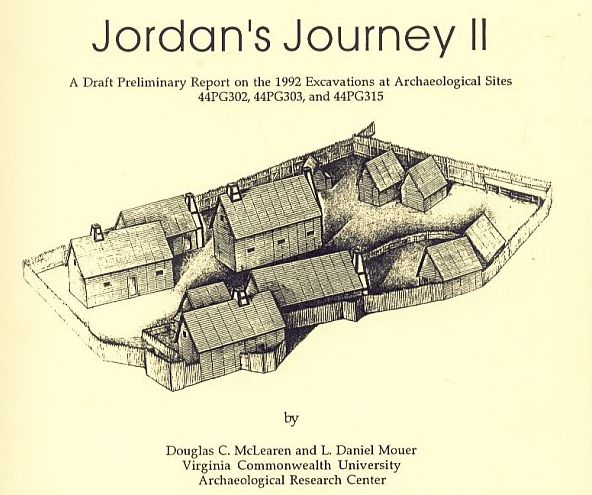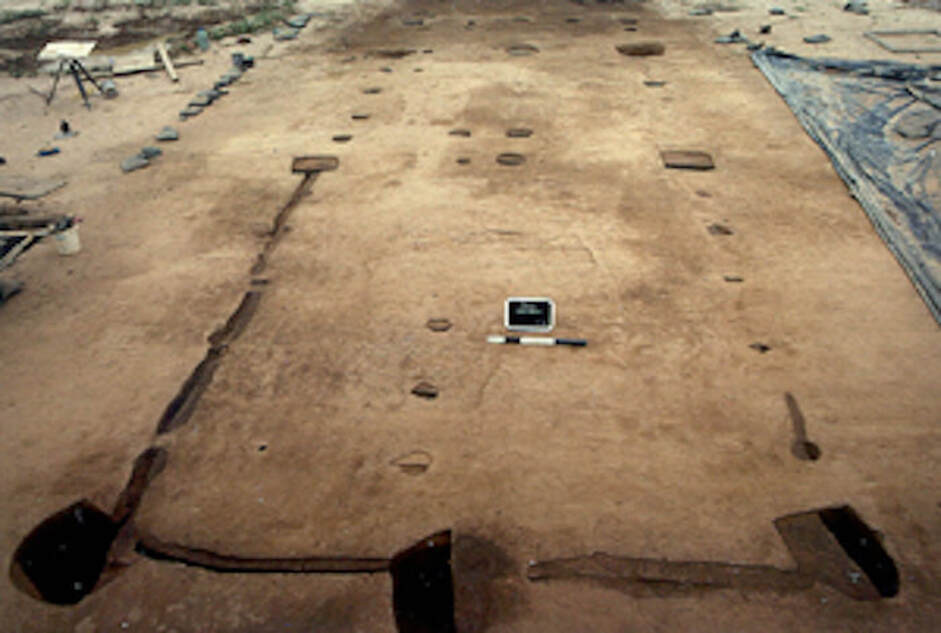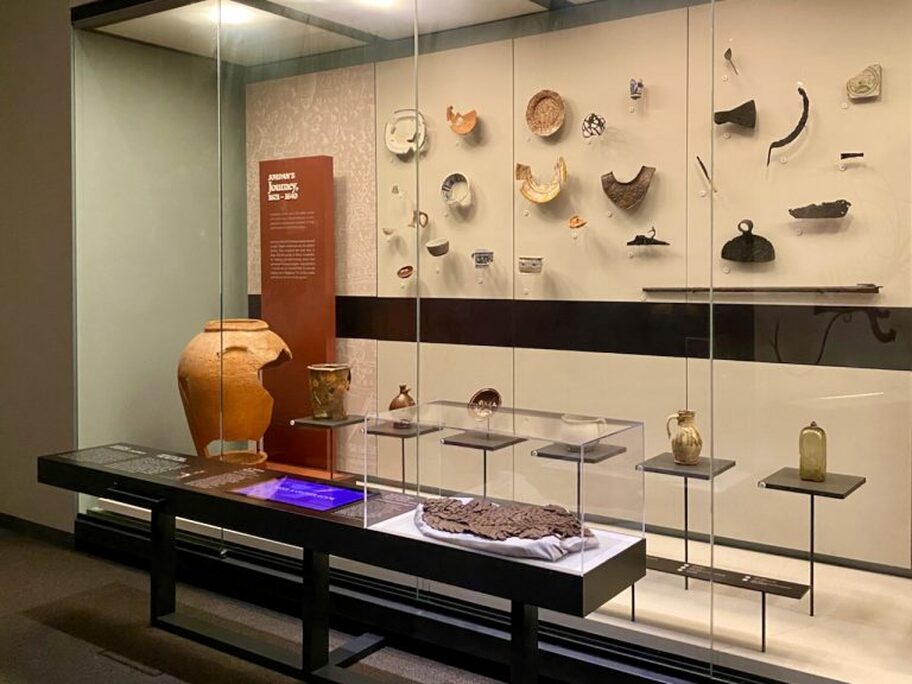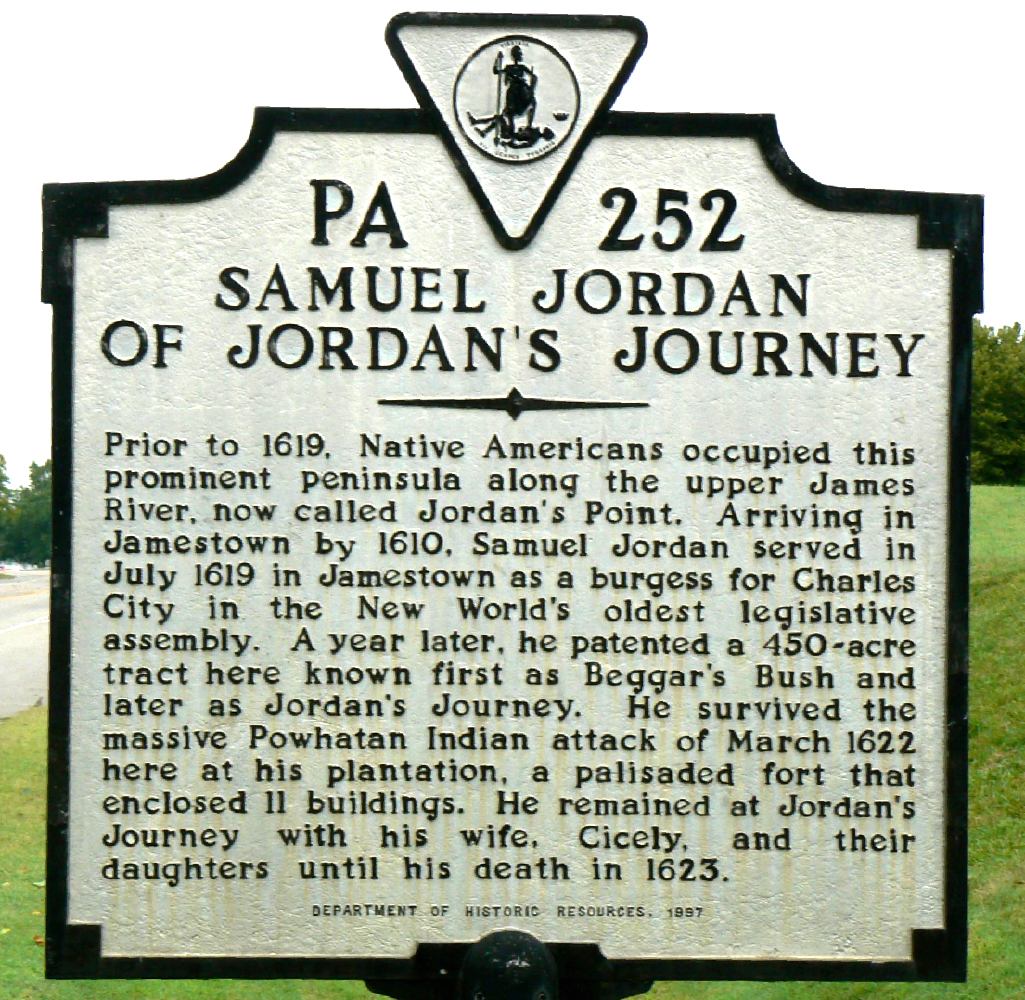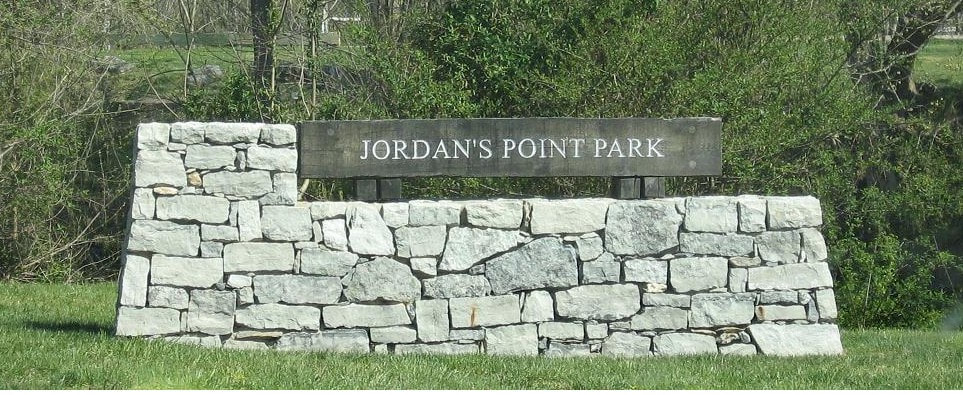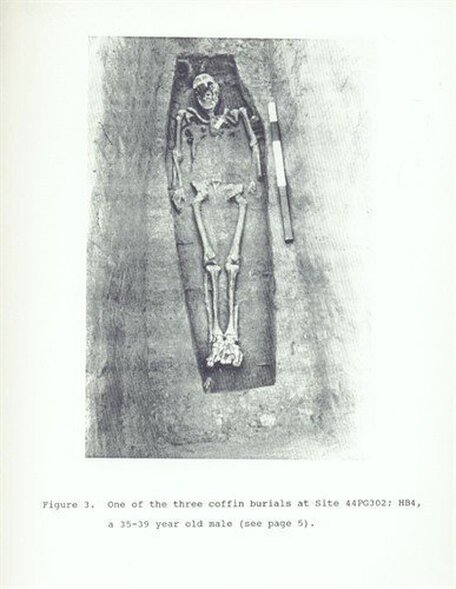By the year 1616, the Virginia London Trading Company was suffering further adversity. The original settlers (like Samuel Jordan) were due their land and stock shares, and the initial investors back home were owed their dividends. The Company was cash poor, and was forced to renege on its cash promises, so therefore, it began distributing 50-acre lots in lieu of cash payments - much to the dismay of the Indians.
Samuel Jordan was initially given 400 hundred acres for his services to the company, located 30 miles up river from the Jamestown fort. He would eventually acquire over a 1000 acres growing tobacco in 3 different locations along the James River.
Samuel Jordan was initially given 400 hundred acres for his services to the company, located 30 miles up river from the Jamestown fort. He would eventually acquire over a 1000 acres growing tobacco in 3 different locations along the James River.
Artifacts from Jordan's Journey
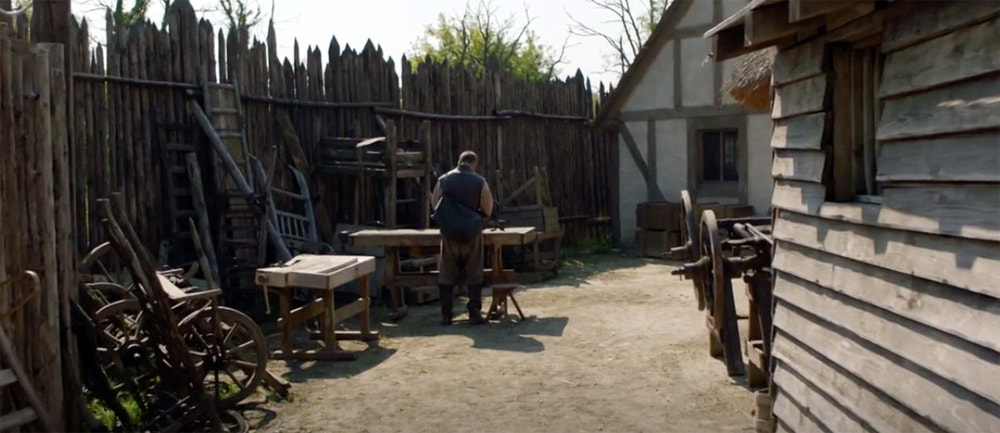
In 1618, Samuel was also one of 8 men appointed to review the four new books of laws sent to Virginia by the Virginia Company.
Samuel Jordan, was given the title "An Ancient Planter" of Virginia due to his early arrival to the New World. He established himself in Charles City County with a plantation known as Jordan's Journey on the southern banks of the James River at the at the confluence of the James and Appomattox Rivers known today as Jordan’s Point. He called his home Beggar's Bush. Beggar's Bush may have been named for the play by Beaumont & Fletcher, but more likely is from common Elizabethan English use of the term, meaning "poverty, often caused by the person's own folly."
One of Sir George Yeardley's first acts as Governor was granting the patent of land at James City, on Dec. 10, 1620, to Samuel Jourdan of Charles City in Virginia, as an ancient planter "who hath abode ten years Compleat in the Colony" and to "Cecily his wife an ancient planter also of nine years continuance."
Abstract of the patent reads: "Give and grant to Samuel Jordan of Charles City in Virga. Gent. an ancient planter who hath abode ten yeares compleat in the Colony . . . for part of his first general divident to be augmented, etc. 450 acres in his own personall right and in the personall claim of Cecily his wife, an ancient planter also of nine years continuance, 100 acres more, and the other 250 acs in recompense for transporting out of England at his own charge five servants . . . and maketh choice in severall places; one house and 50 acs called _____ilies (believed to be "Bailies") Point in Charles Hundred, bordering E upon the great river, W upon the main land, S upon John Rolfe & N upon Capt. John Wardeefe (Woodliffe). Secondly in ye hundred land mentioned an tenement containing 12 acs, which abuts north upon the great river, east upon a swamp and west is encompassed by Martin's Hope now in the tenure of Capt. John Martin, Master of ye Ordinance; and thirdly, 388 acs, bordering ye remainder of ye said 450 acs, in or near upon Sandy's hundred, bordering towards ye east upon ye land of Temperance Baley, west upon ye main lands. Dated Sept. 10, 1620.
Samuel Jordan, was given the title "An Ancient Planter" of Virginia due to his early arrival to the New World. He established himself in Charles City County with a plantation known as Jordan's Journey on the southern banks of the James River at the at the confluence of the James and Appomattox Rivers known today as Jordan’s Point. He called his home Beggar's Bush. Beggar's Bush may have been named for the play by Beaumont & Fletcher, but more likely is from common Elizabethan English use of the term, meaning "poverty, often caused by the person's own folly."
One of Sir George Yeardley's first acts as Governor was granting the patent of land at James City, on Dec. 10, 1620, to Samuel Jourdan of Charles City in Virginia, as an ancient planter "who hath abode ten years Compleat in the Colony" and to "Cecily his wife an ancient planter also of nine years continuance."
Abstract of the patent reads: "Give and grant to Samuel Jordan of Charles City in Virga. Gent. an ancient planter who hath abode ten yeares compleat in the Colony . . . for part of his first general divident to be augmented, etc. 450 acres in his own personall right and in the personall claim of Cecily his wife, an ancient planter also of nine years continuance, 100 acres more, and the other 250 acs in recompense for transporting out of England at his own charge five servants . . . and maketh choice in severall places; one house and 50 acs called _____ilies (believed to be "Bailies") Point in Charles Hundred, bordering E upon the great river, W upon the main land, S upon John Rolfe & N upon Capt. John Wardeefe (Woodliffe). Secondly in ye hundred land mentioned an tenement containing 12 acs, which abuts north upon the great river, east upon a swamp and west is encompassed by Martin's Hope now in the tenure of Capt. John Martin, Master of ye Ordinance; and thirdly, 388 acs, bordering ye remainder of ye said 450 acs, in or near upon Sandy's hundred, bordering towards ye east upon ye land of Temperance Baley, west upon ye main lands. Dated Sept. 10, 1620.
In 1624, Virginia became a royal colony. Ten years later, in 1634, the area of Jordan's Journey (later know as Jordan’s Point) became part of Charles City Shire, still later Charles City County. The area of Charles City County south of the James River eventually became Prince George County in 1703.
Samuel Jordan's property wasn't known by the name Jordan's Journey until near the time of or shortly after his death.
Samuel Jordan's property wasn't known by the name Jordan's Journey until near the time of or shortly after his death.
Jordan’s Journey, 1621-1640
Excavations at this site in the 1980s yielded information about the architecture of early settlements, lifestyles and standards of living, and the extent of trade in early Virginia.
Survivors of the 1622 Powhatan attacks relocated at eight Virginia settlements; one was Jordan’s Journey. Four complexes were built there to house fifty-five people in fifteen households. Six buildings provided housing; sixteen were agricultural. The largest complex—Samuel Jordan’s—was the size of a football field. Its principle residence was a “longhouse,” 55 x 16 feet, wooden and built on posts set into the ground.I
in early 1624/25, the Colony of Virginia made a record of its inhabitants and provisions, known as the 1624/25 Muster. There we find 30 miles upstream from Jamestown, on the south side of the James River, the plantation of Samuel Jordan—known as Jordan’s Journey. Samuel Jordan was a member of the first Virginia Assembly in 1619.
In the Muster, on 21 Jan 1624/25, we find:
* William Farrar aged 31 [arrived] on the Neptune, Aug 1618
* Sisley Jordan aged 24 on the Swan, Aug 1610
* Mary Jordan age 3 years, borne heare [meaning Virginia]
* Margarett Jordan 1 yeare, borne heare
* Temperance Baly [Bailey] 7 yeares, borne heare
* 10 servants, listed with name, age, and arrival
* 41 others including several families, also listed with name, age, and arrival
The provisions include:
* 22 houses for 15 households
* 3 boats
* 37.5 pounds powder
* 554 pounds lead
* 130 pounds shot
* 18 piece [arms]
* 11 armor
* 26 coat of mail
* 1 coat of steel
* 6 head piece
* 1 petronel [“a portable firearm of the 15th century resembling a carbine of large caliber (Jester and Hiden 1987:18)]
* 561 bushels corn
* 1 bushel beans
* 2 bushels peas and beans
* 1,250 dry fish
* 20 neat cattle
* 24 swine
* 227 poultry
On 12 Mar 1621/22, the Powhatan natives attacked the colony, killing 347 settlers, a quarter of the population. 10 settlers were killed at William Farrar’s home. None were killed at Jordan’s Journey. After the attack, William Farrar abandoned his home and lived with the Jordans at Jordan’s Journey. Samuel then died in 1623 of unknown causes. William Farrar was made administrator of Samuel’s estate on 19 Nov 1623.
Excavations at this site in the 1980s yielded information about the architecture of early settlements, lifestyles and standards of living, and the extent of trade in early Virginia.
Survivors of the 1622 Powhatan attacks relocated at eight Virginia settlements; one was Jordan’s Journey. Four complexes were built there to house fifty-five people in fifteen households. Six buildings provided housing; sixteen were agricultural. The largest complex—Samuel Jordan’s—was the size of a football field. Its principle residence was a “longhouse,” 55 x 16 feet, wooden and built on posts set into the ground.I
in early 1624/25, the Colony of Virginia made a record of its inhabitants and provisions, known as the 1624/25 Muster. There we find 30 miles upstream from Jamestown, on the south side of the James River, the plantation of Samuel Jordan—known as Jordan’s Journey. Samuel Jordan was a member of the first Virginia Assembly in 1619.
In the Muster, on 21 Jan 1624/25, we find:
* William Farrar aged 31 [arrived] on the Neptune, Aug 1618
* Sisley Jordan aged 24 on the Swan, Aug 1610
* Mary Jordan age 3 years, borne heare [meaning Virginia]
* Margarett Jordan 1 yeare, borne heare
* Temperance Baly [Bailey] 7 yeares, borne heare
* 10 servants, listed with name, age, and arrival
* 41 others including several families, also listed with name, age, and arrival
The provisions include:
* 22 houses for 15 households
* 3 boats
* 37.5 pounds powder
* 554 pounds lead
* 130 pounds shot
* 18 piece [arms]
* 11 armor
* 26 coat of mail
* 1 coat of steel
* 6 head piece
* 1 petronel [“a portable firearm of the 15th century resembling a carbine of large caliber (Jester and Hiden 1987:18)]
* 561 bushels corn
* 1 bushel beans
* 2 bushels peas and beans
* 1,250 dry fish
* 20 neat cattle
* 24 swine
* 227 poultry
On 12 Mar 1621/22, the Powhatan natives attacked the colony, killing 347 settlers, a quarter of the population. 10 settlers were killed at William Farrar’s home. None were killed at Jordan’s Journey. After the attack, William Farrar abandoned his home and lived with the Jordans at Jordan’s Journey. Samuel then died in 1623 of unknown causes. William Farrar was made administrator of Samuel’s estate on 19 Nov 1623.
Proudly powered by Weebly
